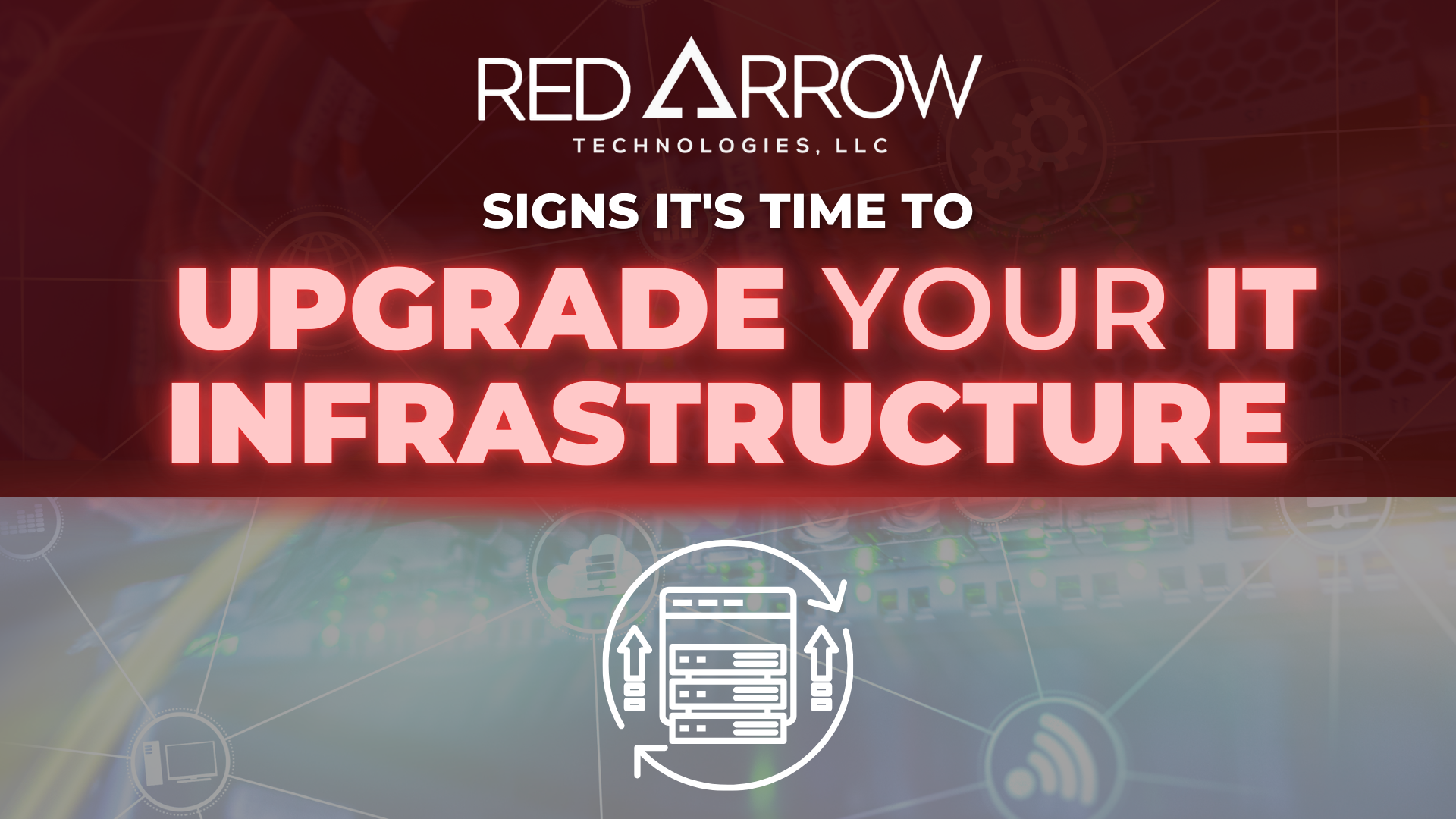This hidden culprit is responsible for the chaotic performance and frustrated employees. It has nothing to do with bad coffee or slow processes; it has to do with something much deeper and more obvious: outdated technology.
Whether its legacy servers gasping for life during peak hours or security protocols that haven’t seen an update since 2015, the signs will not always be there, flashing red. Other times, they’re quieter: a delay in loading a business-critical app, increased support tickets, or just an odd feeling that everything feels slower.
Getting an IT infrastructure upgrade isn’t about keeping up with trends but staying operational, competitive, and secure. When does one know when your tech is holding them back? Let’s break it down.
When Slow Systems Start Costing You Time and Money
No one expects IT systems to last forever. According to Intel, hardware like servers and storage devices averages a lifetime of three to five years. After that, they start to physically deteriorate, but their ability to meet modern demands still remains intact. Productivity isn’t necessarily an issue. It’s a question of money. For instance, waiting on file loads or dealing with system crashes equates to wasting minutes or hours. According to Gartner, downtime costs businesses anywhere from $5,600 per minute, depending on the size and type of disruption.
Multiply that by how often those little hiccups occur in any given week. Suddenly, what felt like an inconvenience looks more like a profitability problem.
This erosion in system performance is one of the most apparent indicators your business needs new IT infrastructure. It may not always demand immediate attention. But over time, it chips away at efficiency, employee morale, and your bottom line.
Your Security Posture Feels Like a House of Cards
Cyber threats don’t knock before entering. They exploit outdated systems, unpatched vulnerabilities, and poor visibility. Suppose your infrastructure is based on legacy systems that are not supported anymore or, even worse, run on end-of-life software. A serious event will happen to you at some point; it is not a matter of if, but when.
According to IBM’s 2023 Cost of a Data Breach Report, the average cost of a data breach in the United States is just under $9.48 million. Older infrastructure will also play a role, especially when it comes to the time it takes to find and fix the problem.
Modern IT environments incorporate security by design, including real-time threat monitoring, rapid patching, encrypted backups, and intelligent access controls. If your current setup requires manual updates or you’ve lost track of how many “temporary fixes” are in place, an IT infrastructure upgrade may be the only way to harden your defenses.
Compatibility Issues Are Becoming a Daily Struggle
Many companies use a mix of tools that worked well five years ago but do not work well together with newer platforms, the cloud, or technologies that customers see.
It starts with a tiny issue: the CRM won’t sync with the email platform. Then, your accounting software needs a specific version of Windows to function. Before long, IT used up almost half their time in firefighting, and innovation was thrown to the back burner.
This instance is a classic case of outdated technology interfering with progress.
Worse, it hinders your ability to implement newer growth platforms that require minimal system flexibility, such as automation, AI-driven analytics, or customer experience solutions. If your core infrastructure isn’t able to support new tools, it’s time to take a closer look at its internal workings. can’t support them, it’s time to look seriously at what’s under the hood.
Your IT Team Is Overwhelmed (and Underutilized)
Tech teams shouldn’t be bogged down with constant break-fixes, legacy system maintenance, or endless troubleshooting loops. When they are, it’s usually a sign the foundational tech stack is no longer doing its job.
An aging infrastructure pulls IT talent away from strategic initiatives, cloud migration, cybersecurity improvements, and innovation pilots and traps them in reactive mode. This leads to burnout and stalls digital transformation.
A successful IT infrastructure upgrade doesn’t just replace old hardware. It liberates your IT team. It gives them modern tools to automate routine tasks, monitor systems proactively, and focus on innovation, not survival.
Your Business Is Growing—But Your Systems Aren’t
When growth occurs—new employees, increased supplies, or a broader market— it tends to stretch IT systems. When the existing infrastructure cannot scale, it transforms into a bottleneck rather than an enabler.
Limited server capacity, poor network speeds, and licensing restrictions are just a few barriers that slow down your ability to serve a broader client base, onboard staff, and introduce new products. Some legacy systems simply cannot understand cloud-native apps or even more modern collaboration tools that remote and hybrid teams rely on.
Modern IT environments are built for flexibility. Continuous increases and apparent movement to cloud and on-premise systems with high performance during peak demand are part of the benefits of modernizing IT systems.
Businesses are poised for growth, but technology is not. This is a clear indication that it’s time for an upgrade.
Technical Debt Is Starting to Catch Up
“Let’s just make it work for now.”
Sound familiar?
That mentality creates technical debt, those quick fixes and workarounds that feel harmless but pile up over time. Ultimately, your systems become so tangled with legacy patches and tools that any change is unpopular or risks the addition of expensive complications.
However, ignoring the debt does not make it go away. The debt simply adds more risk and delays the inevitable. Some people think it is scary to shut down or hand over systems all at once, but it is also scary to think about spending months or years trying to fix a system that cannot be made future-proof. Every day in delay makes an IT infrastructure upgrade much more costly in terms of money, agility, security, and resilience.
The Real Value Behind Modernization
Let’s talk about the upside. This isn’t solely about avoiding risks; it’s also about creating opportunities for growth and success.
The benefits of modernizing IT systems go far beyond faster hardware or sleeker dashboards. We’re talking about:
- Enhanced productivity: Reduced distractions, quicker access, and streamlined workflows.
- Improved collaboration: Integration with cloud apps and remote-friendly platforms.
- Stronger security posture: Proactive monitoring, excellent patch management, and compliance support.
- Cost predictability: A shift from proactive infrastructure planning to reactive maintenance.
Ready to Modernize?
It might seem safe to hang on to outdated technology, mainly if it “still works.” If your systems are slowing you down and exposing you to risk or preventing your team from doing its best work, it’s time for some rethinking.
Help is available. Red Arrow Technologies helps businesses like yours understand the indicators that your business needs new IT infrastructure, understand the gaps, and develop plans for upgrades to support long-term growth, performance, and security.
Let’s discuss how an IT infrastructure upgrade can set your business on a new stage of success without disruption. Contact us today to begin your modernization journey with confidence.



